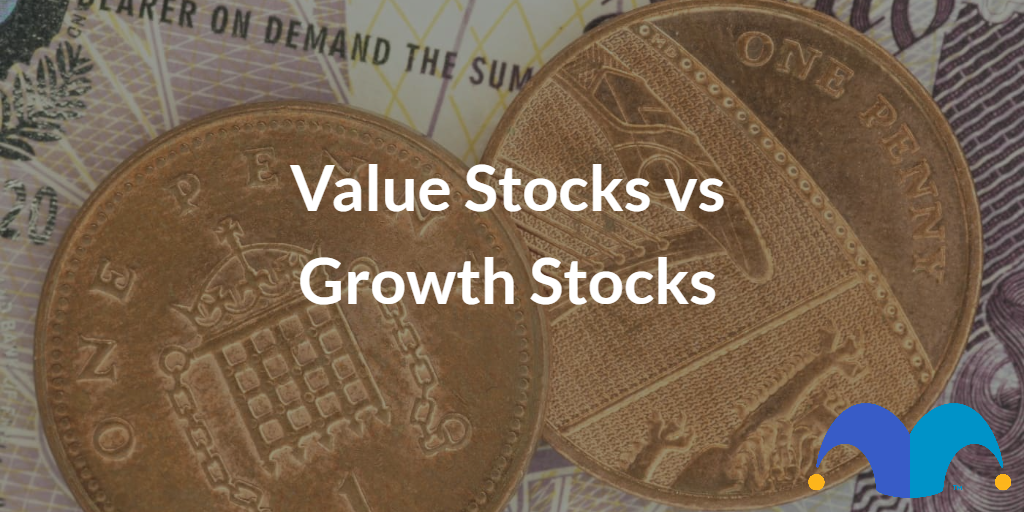The value vs growth stocks debate is common within the investing community. These types of shares present wildly different approaches to building wealth in the stock market. But which provides the greatest returns?
Let’s find out the surprising answer.
Growth vs value stocks: what’s the difference?
Before diving into which type of stock is the better place for an investor’s capital, it’s essential to understand the fundamental differences between growth and value.
Growth stocks
Growth shares largely make up the bulk of the stock market. These businesses come in all shapes and sizes. However, they’re often smaller enterprises with an exciting product or service that has the potential to explode in demand over the long term.
It’s not uncommon to see double-digit, or even triple-digit revenue and earnings growth delivered each year from these businesses. This incredible performance understandably drives a lot of excitement. And is why growth investing is so popular.
However, this comes with a caveat. A growth stock can very quickly gain a lofty valuation in anticipation of future performance.
In recent years, we’ve seen shares reach triple-digit price-to-earnings ratios – and that’s just among the profitable ones. Many growth stocks lack a meaningful level of earnings. In this case, the price-to-sales ratio is often used as an alternative form of relative valuation. But even this metric can reach absurd levels because of unrealistic expectations from growth investors.
Buying in early can generate enormous returns for prudent investors. However, lofty valuations tend to result in a lot of stock price volatility if growth suddenly starts to slow down. And that’s something that was plaguing many companies in 2022.
Value stocks
Value stocks are typically larger established enterprises that don’t have enormous growth potential left. They’re far less exciting than the prospects of growth stocks and, as such, don’t garner as much attention.
However, this lack of attention is precisely what creates buying opportunities. All too often, a “boring” business can achieve relatively stellar results, and it goes completely unnoticed. In these situations, value investors who see the gap between price and intrinsic value buy shares at a discount hoping that the market eventually realises the unseen potential.
Alternatively, value opportunities can be created on negative news. The firm might announce a delay in product production or get fined for a regulatory breach. This often puts off a lot of investors who sell their positions in protest, resulting in a sharp decline.
But providing the fundamentals are still solid, these short-term disruptions usually eventually unwind, generating sizable returns for patient investors. This is commonly known as value investing.
Characteristics comparison
| Value stock | Growth stock | |
| Valuation | Low price, high value | High price, small but growing value |
| Price multiples (P/E ratio, P/S ratio, P/B ratio, etc.) | Typically trades at low multiples | Typically trades at high multiples |
| Return potential | Low | High |
| Dividends & share buybacks | Typically, high dividend yields of +4%, with a buyback programme | Rare for any dividends to be paid; stock buybacks can be common but are outweighed by aggressive share issues through stock-based compensation for employees |
| Share price volatility | Low | High |
| Business risk | Typically, proven businesses with strong financials resulting in a modest level of risk | Typically, an unproven business with lots of potential; however, the lack of financial security creates substantially higher investment risks, especially among small-capitalisation companies |
Do growth or value stocks perform better?
On the surface, it would seem that growth stocks can deliver the best performance. After all, a truly disruptive product or service could revolutionise an entire industry, shaping the future of the world as we know it.
Sadly, as always, the stock market is not that simple. There is no black-and-white answer but rather a murky grey.
Numerous studies have investigated the performance of value stocks compared to growth stocks, and the results ultimately boil down to ‘it depends’.
Over the last decade, growth stocks have been the clear winner, with technology companies being the prime catalyst behind the S&P 500’s impressive performance. But 10 years prior, value stocks were leading the charge.
Following the dot com bubble, access to external capital dried up. And many once-exciting growth companies that lacked meaningful cash flow quickly found growth grinding to a halt. Meanwhile, self-sustaining value stocks didn’t suffer such problems. They could keep yielding decent results with a tasty dividend for patient shareholders.
Now that we’re entering into another period of economic stress, does that mean value stocks are primed to make another comeback?
It’s possible but far from guaranteed. After all, many growth stocks were leveraging their high share price in 2021 to raise capital through equity. As such, plenty of unprofitable firms have enormous levels of liquidity to keep funding activities to mitigate the impact of rising interest rates and inflation.
Should you invest in value or growth?
This lack of clear answer as to which category of investing is better is why there continues to be a debate about growth stocks vs value stocks today. Ultimately, it boils down to personal preference.
Investors confident in their abilities to identify winning young businesses with the stomach for volatility should follow the route of growth stocks. Similarly, those confident in their abilities to identify hidden value in established enterprises and/or who prefer stability should follow the path of value stocks.
Having said that, there’s nothing stopping investors from owning both and reaping the rewards from value and growth shares.
Regardless of choice, investors must remember to always follow their investment strategy, and stay within their risk tolerance, time horizon, and financial goals.
